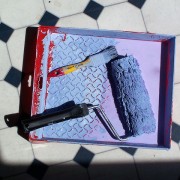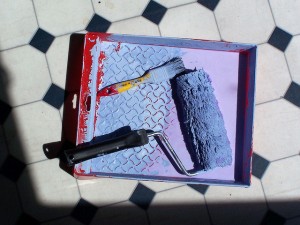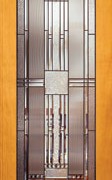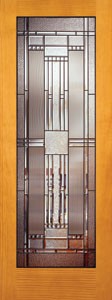How difficult is it to backpaint glass?
Backpainting glass is easy. It requires no special tools, no special training, no difficult preparation and it isn’t expensive, either. It’s an ideal project, even if you’re new to home improvement.
Glassprimer™ glass paint can be applied with ordinary painting tools, including brushes, rollers, sponges or a high volume, low pressure paint sprayer. All of these applicators are available at your local home improvement store.
Surface preparation for backpainted glass is straightforward. Ordinary alcohol, fine-grit steel wool, and cheap paper towels round out your list of necessary supplies. Whether you intend to backpaint glass or Plexiglas™, this materials list stays the same. You may want to protect your hands with a pair of rubber gloves, especially if your hands are sensitive to rubbing alcohol.
When you’re ready to paint, prepare your surface by washing it with alcohol. Lay the workpiece on a horizontal surface, and pour alcohol on it. Using the steel wool, remove any surface dirt, adhesives, oil or fingerprints. Dry the surface until it’s “squeaky clean” with the paper towels. Here’s a tip – don’t use really expensive paper towels. The store-brand cheapies actually work best because they’re unlikely to leave “lint” behind on the surface of the glass.
That’s it! Easy!
Apply the paint with the applicator of your choice. We recommend a high-volume, low-pressure sprayer. It’s the most economical way to provide complete, even coverage across the surface of the glass. You can also get great coverage using a roller, brush or sponge. Once you’ve applied the paint, let it dry for about two hours before you attempt to handle the piece. Allow the coat to dry completely before adding extra coats. The thicker the coat of paint, the more drying time you’ll want to allow. Generally, a sprayer provides the thinnest and most even coverage. Rollers and brushes create thicker coats. If you use a brush or roller, allow extra drying time between coats.
Wipe up any drips immediately with a wet cloth. After you’ve finished painting the piece, allow it to dry completely before mounting it. Use a neutral-cure silicone adhesive to mount your masterpiece, and that’s it!
Backpainted glass is one of the easiest, least expensive and most elegant home improvement projects you can create.
Glassprimer™ glass paint is a specialized glass coating that bonds permanently to glass surfaces. GlassPrimer also makes a glass surface molecular activator that is designed to work with UV-inkjet glass printing processes. Glassprimer™ glass paint can be used in both interior and exterior applications and can help reduce solar heat gain in some applications. For more information about Glassprimer™ glass paint, please visit the rest of our site. If you’d like to purchase Glassprimer™ glass paint, please visit our online store .
Photo Credit: Photocapy, via Flickr.com




